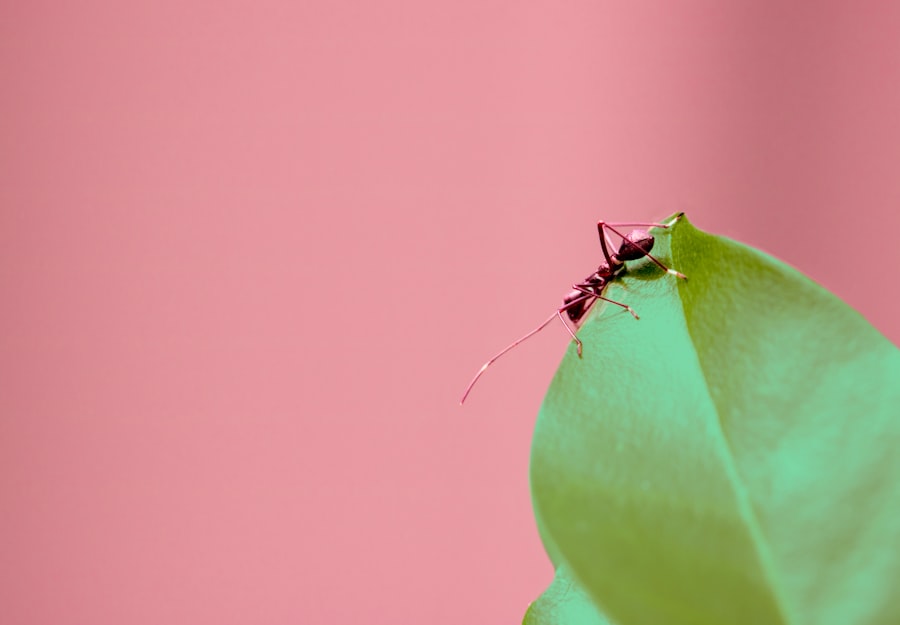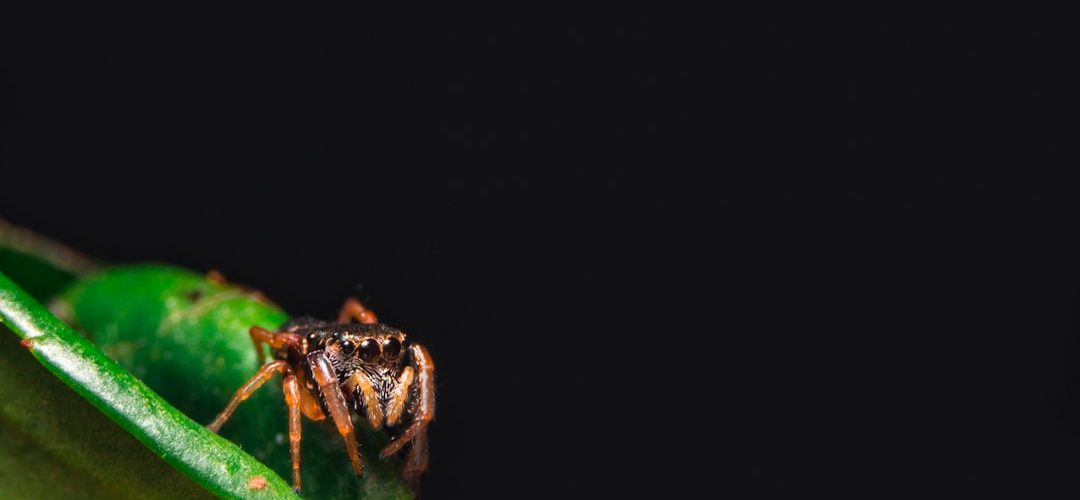As I delve into the realm of website management, I often find myself reflecting on the significance of pest control—not just in the physical world, but in the digital landscape as well. Just as a home requires protection from physical pests that can cause damage, my WordPress website needs safeguarding against digital nuisances that can disrupt its functionality and compromise its integrity.
The importance of pest control in this context cannot be overstated; it is essential for maintaining a healthy online presence.
In the digital age, where information is exchanged at lightning speed, the consequences of neglecting pest control can be dire. A compromised website can lead to data breaches, loss of customer trust, and even financial repercussions. Therefore, understanding the importance of pest control is not merely an option; it is a necessity for anyone who values their online platform.
By prioritizing pest control, I can ensure that my website remains a safe and reliable space for visitors, ultimately contributing to its success and longevity.
Table of Contents
ToggleKey Takeaways
- Understanding the importance of pest control is crucial for maintaining a healthy and secure WordPress website.
- Pests can have a significant impact on your WordPress website, leading to security breaches, data loss, and damage to your online reputation.
- Common pests that affect WordPress websites include malware, viruses, spam, and hackers.
- Signs of pest infestation on your website may include slow loading times, unusual pop-ups, and unauthorized changes to your content.
- Implementing pest control measures such as using security plugins, regular updates, and backups is essential for maintaining a pest-free WordPress website.
The Impact of Pests on Your WordPress Website
The Immediate Effects of Pest Infestations
The immediate effects of pest infestations can be frustrating and detrimental to your website’s performance. Slow loading times, unexpected crashes, and even complete shutdowns can occur, deterring visitors from engaging with your content and leading to a decline in traffic and potential revenue.
The Long-term Consequences of Pest Infestations
The long-term consequences of pest infestations can be even more severe. If your website becomes associated with malicious activity, search engines may penalize it, resulting in lower rankings and reduced visibility. This can have a ripple effect, diminishing your brand’s reputation and credibility in the eyes of potential customers.
Taking Proactive Measures to Protect Your Online Presence
Understanding the impact of pests on your WordPress website should motivate you to take proactive measures to protect your online presence and ensure a seamless experience for your audience. By taking action, you can safeguard your website from the devastating consequences of pest infestations and maintain a strong online reputation.
Common Pests That Affect WordPress Websites

As I navigate the complexities of website management, I have encountered several common pests that can infiltrate WordPress sites. One of the most notorious is malware, which can take various forms, including viruses, worms, and trojans. These malicious programs can corrupt files, steal sensitive information, and even hijack my website for nefarious purposes. Recognizing the threat posed by malware has made me vigilant in implementing security measures to safeguard my site. Another common pest is spam bots, which can flood my website with unwanted comments and messages. Not only do these bots clutter my site, but they can also harm my site’s credibility by making it appear unprofessional.
Additionally, there are vulnerabilities in outdated plugins and themes that can serve as entry points for pests. By familiarizing myself with these common threats, I am better equipped to defend my WordPress website against potential infestations.
Signs of Pest Infestation on Your Website
| Signs of Pest Infestation on Your Website |
|---|
| 1. Sudden drop in website traffic |
| 2. Unusual spikes in bounce rate |
| 3. Strange or irrelevant keywords in search queries |
| 4. Unauthorized changes in website content |
| 5. Suspicious links or pop-ups on the website |
Identifying signs of pest infestation on my WordPress website is crucial for timely intervention. One of the first indicators I look for is unusual activity in my site’s analytics. If I notice a sudden spike in traffic from suspicious sources or a drop in user engagement, it raises a red flag.
Additionally, I pay close attention to any unexpected changes in my site’s appearance or functionality. If pages load slowly or links become broken without explanation, it may signal an underlying issue. Another telltale sign of pest infestation is the presence of unfamiliar user accounts or unauthorized changes to my site’s settings.
If I discover new admin accounts that I did not create or settings that have been altered without my consent, it is a clear indication that my website may have been compromised. By staying vigilant and regularly monitoring these signs, I can take swift action to address any potential infestations before they escalate into more significant problems.
The Ultimate Pest Control Solutions for WordPress Websites
In my quest for effective pest control solutions for my WordPress website, I have discovered several strategies that have proven invaluable. First and foremost, keeping my site updated is essential. Regularly updating WordPress core files, themes, and plugins helps patch vulnerabilities that pests may exploit.
This proactive approach significantly reduces the risk of infestation and ensures that my site remains secure. Additionally, implementing robust security measures is crucial in safeguarding my website from pests. Utilizing firewalls, security plugins, and malware scanners provides an extra layer of protection against potential threats.
These tools not only help detect and eliminate existing pests but also prevent future infestations from occurring. By combining regular updates with comprehensive security measures, I can create a formidable defense against digital nuisances.
Choosing the Right Pest Control Plugins for Your Website

Selecting the right pest control plugins for my WordPress website has been a pivotal step in enhancing its security. With numerous options available, I have learned to prioritize features that align with my specific needs. For instance, I look for plugins that offer real-time monitoring and automated scanning capabilities to detect potential threats promptly.
One plugin that has caught my attention is Wordfence Security, which provides a comprehensive suite of tools for protecting my site from malware and unauthorized access. Its firewall feature helps block malicious traffic while its malware scanner identifies vulnerabilities within my site. Another option I consider is Sucuri Security, known for its robust malware detection and removal services.
By carefully evaluating these plugins based on their features and user reviews, I can make informed decisions that bolster my website’s defenses.
Implementing Pest Control Measures on Your WordPress Website
Once I have chosen the appropriate pest control plugins for my WordPress website, the next step is implementing these measures effectively. Installation is typically straightforward; however, configuring the settings to suit my specific requirements is where the real work begins. I take the time to customize each plugin’s settings to ensure optimal protection without hindering my site’s performance.
Regularly scheduling scans and updates is another critical aspect of implementation. By setting up automated scans through my chosen plugins, I can ensure that any potential threats are detected promptly without requiring constant manual oversight. Additionally, I make it a habit to review security logs regularly to identify any suspicious activity or attempted breaches.
This proactive approach allows me to stay one step ahead of potential pests and maintain a secure online environment.
Tips for Maintaining a Pest-Free WordPress Website
Maintaining a pest-free WordPress website requires ongoing diligence and proactive measures. One of the most effective tips I have adopted is creating regular backups of my site. By having up-to-date backups stored securely offsite, I can quickly restore my website in case of an infestation or other catastrophic events.
This practice provides peace of mind knowing that even if something goes wrong, I have a safety net in place. Another essential tip is to limit user access to my site. By granting administrative privileges only to trusted individuals and regularly reviewing user accounts, I can minimize the risk of unauthorized access or accidental changes that could lead to infestations.
Additionally, educating myself about emerging threats and best practices in website security keeps me informed and prepared to tackle any challenges that may arise.
The Role of Regular Inspections in Pest Control
Regular inspections play a vital role in effective pest control for my WordPress website. By conducting routine checks on various aspects of my site—such as performance metrics, security logs, and plugin updates—I can identify potential issues before they escalate into significant problems. These inspections allow me to maintain a proactive stance against pests and ensure that my website remains in optimal condition.
During these inspections, I also take the opportunity to assess the effectiveness of my current pest control measures. Are my chosen plugins performing as expected? Are there any new vulnerabilities that need addressing?
By asking these questions during each inspection, I can make informed decisions about necessary adjustments or enhancements to my security strategy.
Dealing with Pest Control Emergencies on Your WordPress Website
Despite my best efforts at prevention, emergencies can still arise when it comes to pest control on my WordPress website. In such situations, having a clear action plan is essential for minimizing damage and restoring functionality quickly. The first step I take during an emergency is to assess the extent of the infestation—identifying which areas of my site are affected and determining whether sensitive data has been compromised.
Once I have a clear understanding of the situation, I immediately activate any security measures available through my plugins—such as quarantining infected files or blocking malicious IP addresses. If necessary, I may also reach out to professional services specializing in malware removal for assistance in resolving more complex issues. By remaining calm and focused during these emergencies, I can effectively navigate challenges and restore my website’s integrity.
Hiring Professional Pest Control Services for Your WordPress Website
While I strive to manage pest control on my own, there are instances when hiring professional services becomes necessary for ensuring the security of my WordPress website. When faced with severe infestations or complex issues beyond my expertise, enlisting the help of professionals can provide peace of mind and expedite resolution. Before hiring a service provider, I conduct thorough research to find reputable companies with proven track records in website security and malware removal.
Reading reviews from other users helps me gauge their effectiveness and reliability. Once I’ve selected a provider, clear communication about the specific issues I’m facing allows them to tailor their approach accordingly. By collaborating with professionals when needed, I can enhance the overall security posture of my WordPress website while focusing on what truly matters—creating valuable content for my audience.
If you are looking to elevate your Pest Control WordPress Website, you may want to consider hiring an expert WordPress designer. Simon Says Web Design offers services to help improve the functionality and design of your website. In addition, having a strong content strategy is key to good SEO, especially through social media posting. This article on content strategy by Simon Says Web Design provides valuable insights on how to optimize your website’s content for better search engine rankings. For large brands looking to enhance their online presence, Simon Says Web Design also offers services to create custom WordPress websites tailored to their specific needs. Check out their website for more information on how they can help improve your online presence. Expert WordPress Designer UK: Elevating Your Website
FAQs
What is a Pest Control WordPress Website?
A Pest Control WordPress Website is a website designed specifically for pest control companies to showcase their services, provide information about common pests, and allow customers to request services or contact the company.
What features should a Pest Control WordPress Website have?
A Pest Control WordPress Website should have features such as a services page, contact form, request a quote form, blog for pest control tips and information, customer testimonials, and a gallery of before and after pest control treatments.
Why should a pest control company use WordPress for their website?
WordPress is a popular and user-friendly platform that allows for easy website management, updates, and customization. It also offers a wide range of plugins and themes specifically designed for pest control businesses.
How can a Pest Control WordPress Website help a pest control company grow their business?
A Pest Control WordPress Website can help a pest control company grow their business by increasing their online visibility, attracting new customers, providing valuable information to potential clients, and showcasing their expertise in pest control services.
What are some important considerations when designing a Pest Control WordPress Website?
When designing a Pest Control WordPress Website, it’s important to consider the user experience, mobile responsiveness, search engine optimization, clear calls to action, and easy navigation for potential customers to find information and request services.




